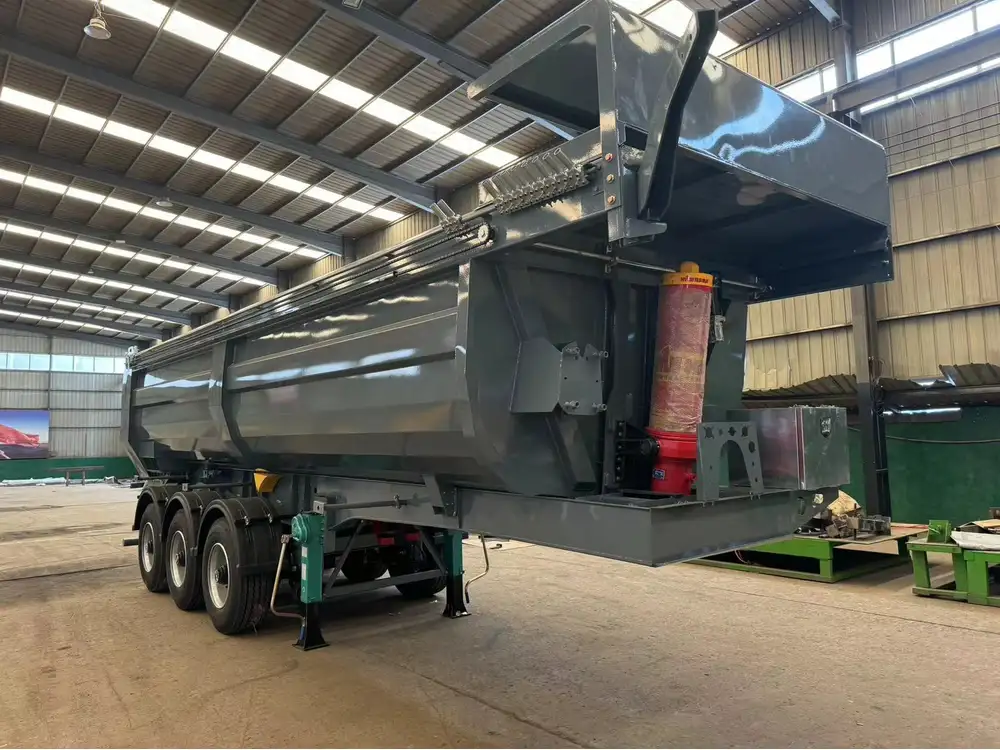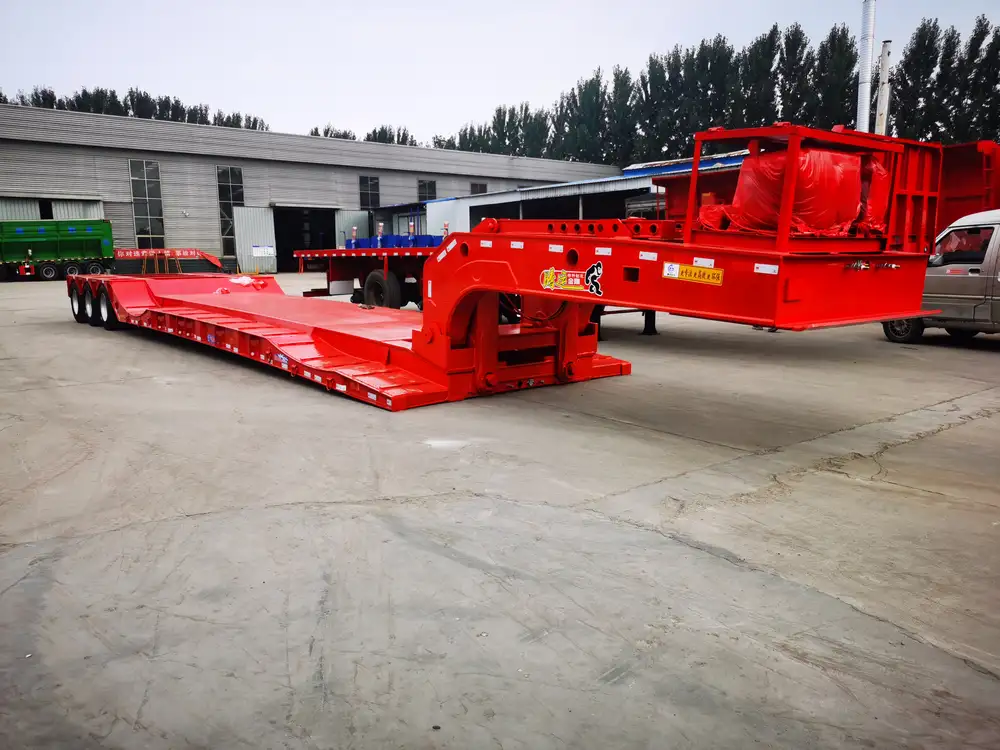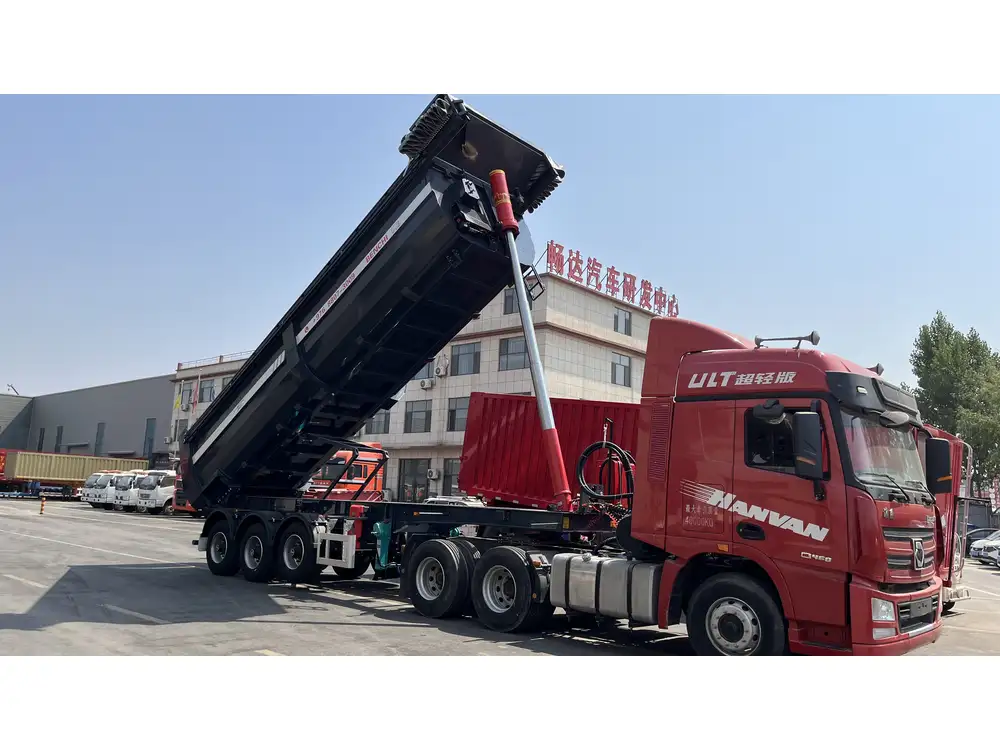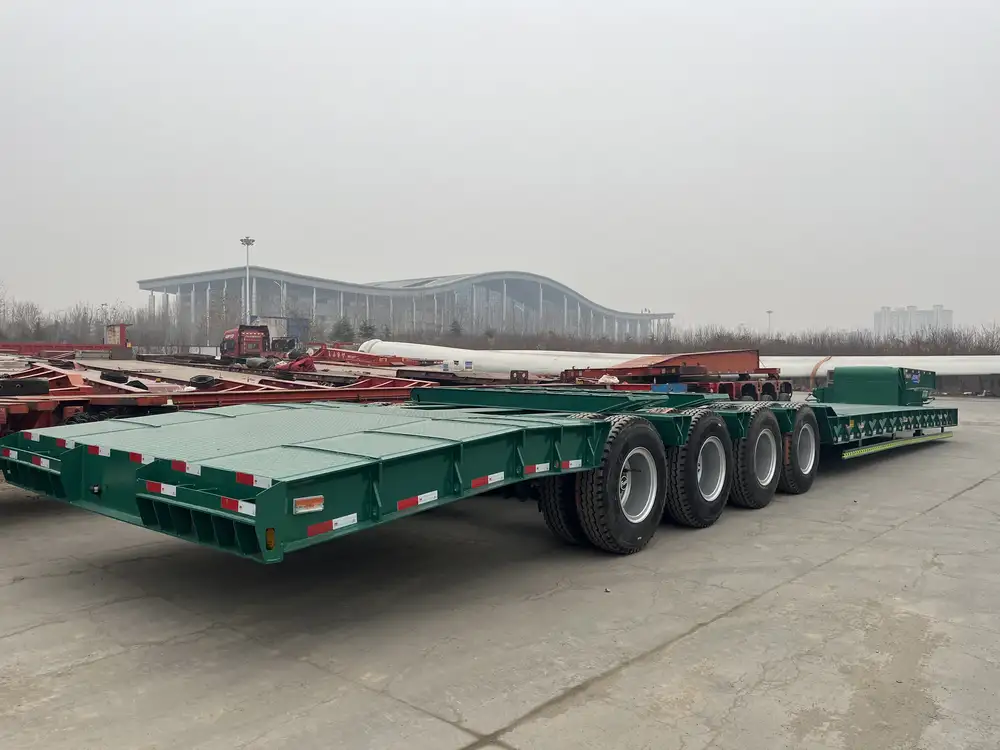When it comes to hauling heavy loads, dump trailers are invaluable assets for construction companies, landscapers, and waste management services. Among the various types available in the market, the 40-yard dump trailer is particularly noteworthy for its capacity and versatility. Understanding the dimensions and specifications of these trailers not only aids in selecting the right equipment but also ensures compliance with regulatory norms and enhances operational efficiency.
1. Overview of 40 Yard Dump Trailers
1.1 Purpose and Utility
40-yard dump trailers are engineered to accommodate significant loads, making them ideal for transporting materials like soil, gravel, debris, and construction waste. Their robust structure and capabilities play a crucial role in large-scale projects, maximizing productivity and minimizing the number of trips required.

1.2 General Dimensions
Typically, a 40-yard dump trailer measures approximately:
- Length: 20 feet to 26 feet
- Width: 8 feet
- Height (sides): 4 to 5 feet
- Capacity: 40 cubic yards
Table 1: Key Dimensions of a 40 Yard Dump Trailer
| Dimension | Measurement |
|---|---|
| Length | 20 – 26 feet |
| Width | 8 feet |
| Height | 4 – 5 feet |
| Capacity | 40 cubic yards |
The dimensions can vary slightly depending on the manufacturer and model, thus it’s advisable to verify specifications based on your specific needs.
2. Advantages of Using a 40 Yard Dump Trailer

2.1 Increased Hauling Capacity
One of the most significant advantages is the unparalleled capacity to transport large volumes of materials in a single trip, which is especially beneficial for massive projects that necessitate bulk movement.
2.2 Enhanced Durability
Quality construction, often featuring reinforced steel frame and heavy-duty axles, ensures that these trailers can withstand the rigors of frequent heavy loads without succumbing to wear and tear.
2.3 Versatile Applications
From construction sites to landscaping projects and waste disposal, a 40-yard dump trailer is suitable for various applications. This adaptability ultimately leads to cost savings and increased efficiency.

3. Configurations and Design Variants
3.1 Standard Dump Trailer
The standard model is designed for general use, capable of handling a wide array of materials, making it the most common configuration.
3.2 Side Dump Trailer
Side dump trailers allow for unloading materials from the side rather than the back, providing greater flexibility in tight spaces. This mechanism is particularly advantageous when working on narrow job sites.

3.3 Roll-Off Dump Trailer
This variant uses a roll-off mechanism for easier loading and unloading, particularly for large containers or bins. Operators can reposition various containers easily, which is ideal for marathon projects.
4. Key Considerations When Choosing a 40 Yard Dump Trailer
4.1 Assessing Load Requirements
Before making a purchase, accurately assess the type and weight of the materials you will frequently transport. This evaluation helps to determine if a 40-yard capacity aligns with your operational needs.

4.2 Weight Ratings and Compliance
Understanding the gross vehicle weight rating (GVWR) is critical. A standard 40-yard dump trailer is typically rated between 14,000 to 20,000 pounds. Regular maintenance checks and adherence to local DOT regulations will ensure compliance and safety.
Table 2: Weight Specifications
| Specification | Value |
|---|---|
| Payload Capacity | 12,000 – 15,000 lbs |
| GVWR | 14,000 – 20,000 lbs |
| Axle Capacity | 7,000 – 10,000 lbs per axle |
4.3 Trailer Material and Build Quality
Durability hinges on the materials used in construction. Steel and aluminum are prevalent but differ in weight, strength, and cost. Consider the environment in which the trailer will be used to select the most appropriate material.

5. Maintenance Tips for Prolonged Trailer Lifespan
5.1 Regular Inspections
Conduct routine inspections of the trailer’s structural integrity. Look for signs of rust, tears, or wear and ensure the hinges and hydraulic systems are functional.
5.2 Proper Tire Maintenance
Monitoring tire inflation, tread depth, and wheel alignment is vital for ensuring safe transportation. Under or over-inflated tires can lead to accidents and reduced fuel efficiency.

5.3 Lubrication of Moving Parts
Regularly lubricating the trailer’s moving components ensures smooth operation and prevents premature wear.
6. Frequently Asked Questions
6.1 What is the maximum weight I can load onto a 40-yard dump trailer?
The maximum load generally ranges from 12,000 to 15,000 lbs, depending on the trailer’s specific design and construction.

6.2 Can a 40-yard dump trailer be towed by a standard truck?
A 40-yard dump trailer typically requires a heavy-duty truck with appropriate towing capabilities. Always refer to the manufacturer’s specifications for vehicle compatibility.
6.3 How do I unload materials efficiently from a 40-yard dump trailer?
Most 40-yard dump trailers employ hydraulic systems for effective unloading. Familiarize yourself with the specific operational instructions provided by the manufacturer for best practices.
7. Conclusion
In conclusion, a 40-yard dump trailer represents not just a piece of equipment, but an essential asset that can revolutionize your hauling capabilities in numerous sectors. By understanding the dimensions, configurations, and intricacies involved in these trailers, users can make informed choices that cater to their business needs.
Choosing the right dump trailer can lead to remarkable enhancements in operational efficiency and productivity. Whether you aim to transport materials for construction, debris for waste management, or any heavy load, investing in a 40-yard trailer could be the game-changer you need.



